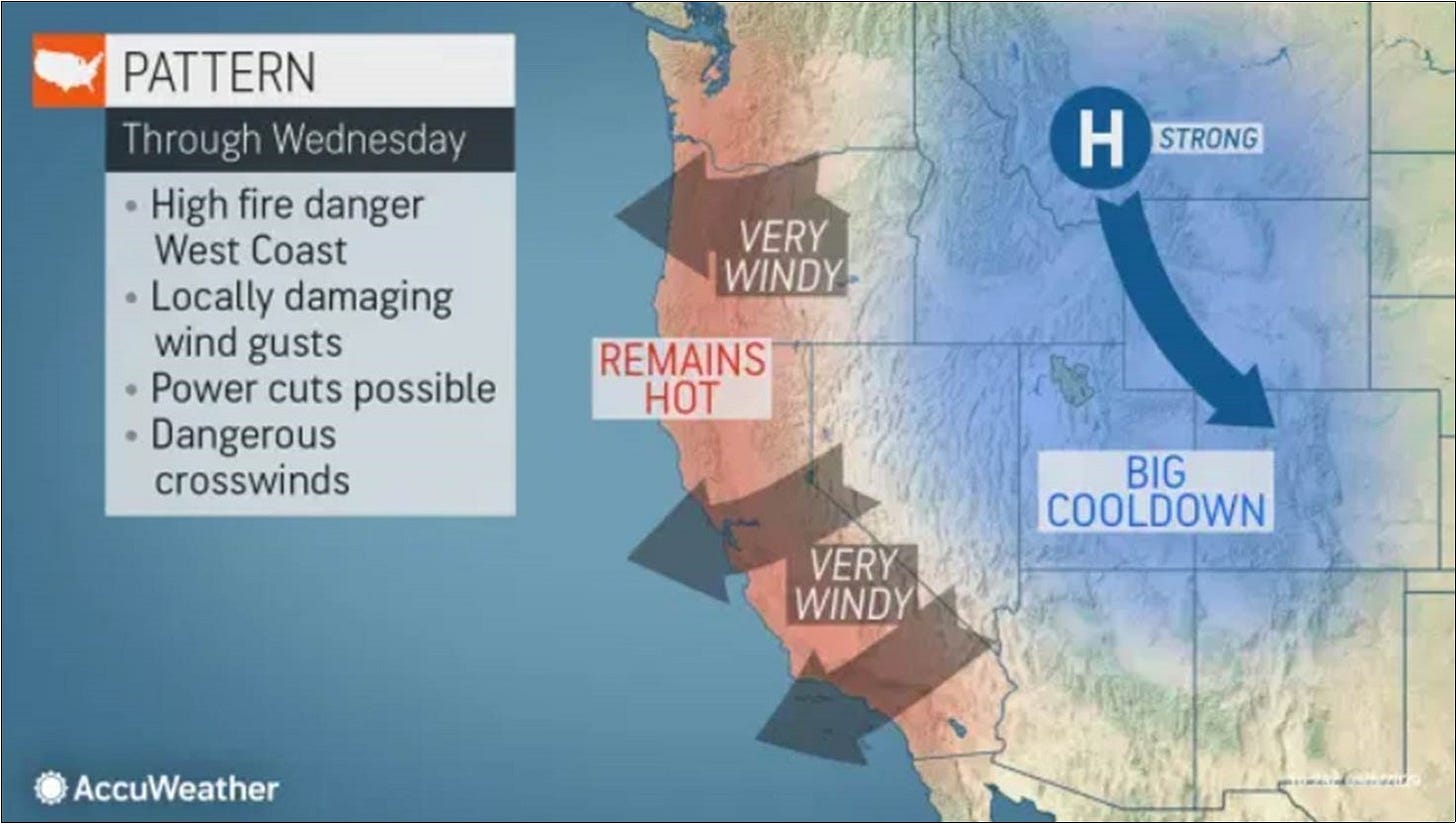Special Update: Oregon Wildfires and Potential Harvest Impacts
Hello and Welcome,
This is a Special Update covering the Oregon wildfires and potential harvest impacts. A FLOG communication from Dena and Ernie @AmalieRobert. Oregon Willamette Valley Pinot Noir.
Our last vintage update in August included graphics depicting the smoke dispersion patterns from the California wildfires and a trailing thought: Stay tuned, things are about to get very interesting.

Our last vintage update in August included graphics depicting the smoke dispersion patterns from the California wildfires and a trailing thought: Stay tuned, things are about to get very interesting.
The left graphic shows the jet stream peaking just north of Portland and then dropping steeply into the Midwest. The right graphic shows the smoke generated from the California wildfires being directed into the interior of the United States. As of this week, things just got VERY interesting.

This graphic gives an atmospheric view of the fires and smoke plumes currently being generated from Oregon wildfires. This major fire and smoke event began on Monday, September 7th. It was due to an atmospheric weather event that is only supposed to occur maybe 2 or 3 times a century. Well, our number just came up.
The jet stream shifted way up to the north and its backside came down through the interior of Canada. This produced a high-pressure dome that flooded the Midwest with an arctic blast of air. Denver, Colorado went from the mid 90’s to the mid 30’s in a span of 18 hours. The collateral impact was the displacement of all the Midwest hot, dry air to the West Coast. This is the same West Coast that was already battling wildfires.

The Beachie Creek and Lionshead Fires collectively known as the Santiam Fire are located about 60 miles west of Amalie Robert Estate near the town of Gates. The east winds heading into Oregon acted like a bellows to significantly inflame the existing wildfires. To imagine using a leaf blower to get your hibachi grill started would seem an extreme exaggeration, but in this case it is a significant understatement. Imagine a typhoon but swap out the rain, then add fire instead. It’s like that.

Prior to the historic windstorm that arrived in the area on Monday, September 7th, the Beachie Creek Fire was estimated to be 469 acres. The fire grew overnight to over 131,000 acres driven by high winds and extremely dry fuels. As of September 10th, the fire has grown to 182,000 acres and is not estimated to be fully contained until October 30th. The Lionshead Fire adds an additional 109,000 acres and is currently 5% contained with a full containment date of October 30th.

This is a GIF (Graphics Interchange Format) posted to Twitter from @NOAA that shows a time lapse of the smoke pattern affecting western Oregon. We are the third fire down on the right. To view, click the image to be directed to Twitter. Or follow this link:
https://twitter.com/i/status/1303679122967728129
A shift in the weather is forecasted to arrive in the next few days. The winds will be from the west and may bring some cool damp air from Alaska. Another possibility is the winds will simply bring back all of the smoke that is currently sitting out over the Pacific Ocean – secondhand smoke, if you will. Lahaina is looking pretty good from here.

The human factor. The impact of this weather event is being felt far and wide. The entire city of Medford, Oregon was recently evacuated. The first casualties from the Santiam Fire were reported September 10th. California and Washington are also in the throes of battling not only these fires, but COVID-19 and the social unrest gripping the country. When can we expect the 4thhorseman of the apocalypse to arrive and what will that bring to bear?
Which brings us to harvest 2020. Most of the Willamette Valley wine is hand harvested. And those hands are connected to bodies who breath air. The average person breaths about 3,400 gallons of air a day – and more under strenuous conditions such as harvest. The current Air Quality Index in Dallas, zip code 97338, is “Very Unhealthy”. We will need to wait until the air clears before any safe harvest can occur. This is a dynamic situation, and which way the wind blows matters.

For now, we are safe and hopeful that the Gulf of Alaska opens up and spills down upon us. Thank you to everyone who has expressed concern for our safety and well-being. Our harvest wish to everyone is stay safe, stay well and be kind to each other. We really are all in the same boat, just with different oars – we are doing our best to keep our oar in the water.
Kindest Regards,
Dena & Ernie



